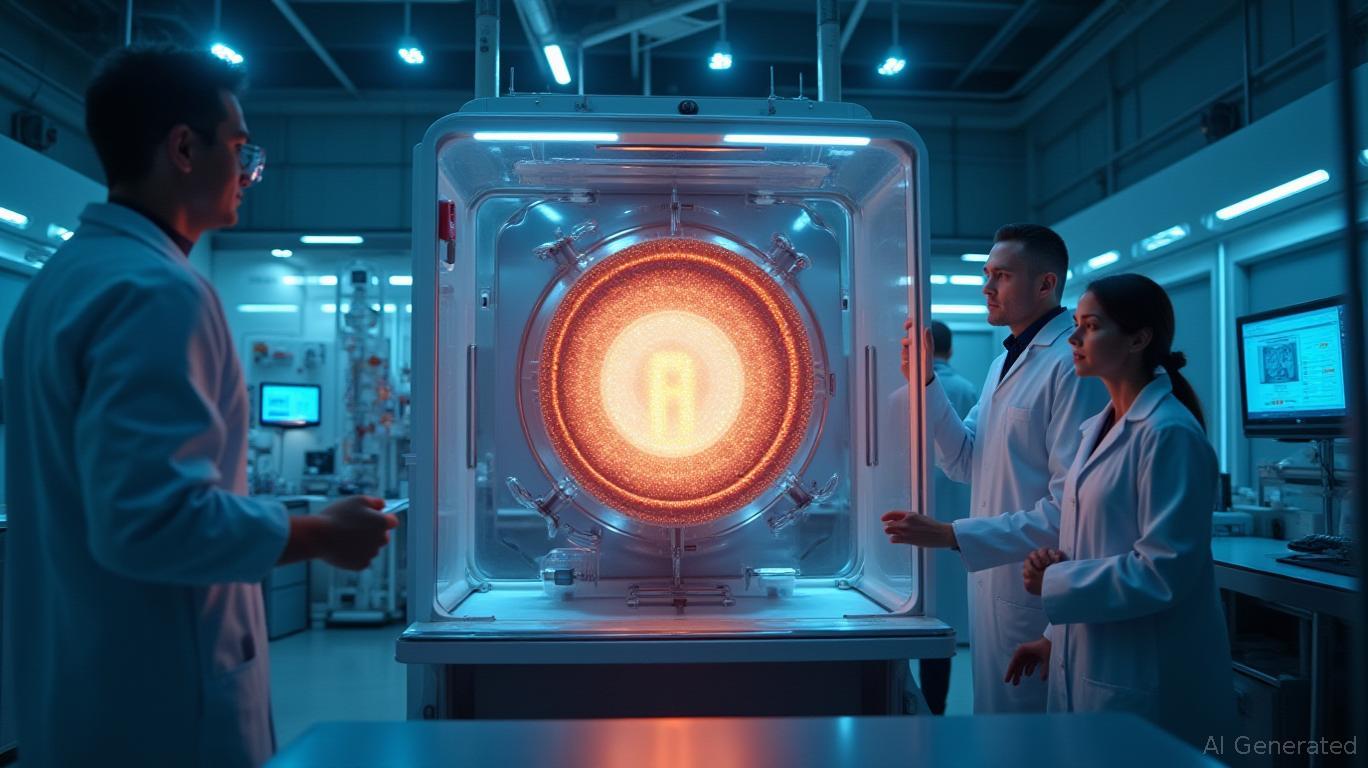Why TAE Technologies' Fusion Breakthrough Could Be the Clean Energy Tipping Point
The race to commercialize fusion energy has long been a marathon, not a sprint—but TAE Technologies is sprinting toward the finish line. With its recent $150 million funding round led by Google, Chevron, and NEA, the company has secured a critical fuel injection into its mission to deliver clean, abundant energy by the 2030s. This isn't just another Silicon Valley buzzword; it's a tangible leap toward solving the world's energy crisis. Here's why investors should take notice—and act now.
A Milestone-Driven Machine
TAE's April 2025 breakthrough, detailed in Nature Communications, marks a turning point. Its Norm machine achieved plasma temperatures exceeding 70 million degrees Celsius—a threshold critical for sustained fusion reactions—while slashing costs by repurposing parts from its predecessor, Norman. This “simplification revolution,” as CEO Michl Binderbauer calls it, isn't just technical progress; it's a blueprint for scalability.

The funding will accelerate construction of Copernicus, the sixth-generation reactor slated for completion by 2026, followed by Da Vinci, the first machine designed to generate net electricity. Unlike competitors relying on ITER's decades-long timeline, TAE's incremental milestones—backed by over 1,500 patents—signal a path to commercialization that's both achievable and investor-friendly.
Why Fusion Matters Now
The urgency for clean energy has never been clearer. With 70% of global greenhouse gas emissions tied to energy production, fusion's promise—zero carbon emissions, no long-lived nuclear waste, and fuel derived from abundant boron—is a game-changer. TAE's hydrogen-boron (p-B11) approach eliminates the risks of radioactive materials, making fusion safer than existing nuclear fission plants.
But the opportunity isn't just environmental. Fusion's ability to provide 24/7 baseload power could upend markets for renewables like solar and wind, which rely on intermittency. TAE's partnerships with Google (AI-driven plasma stability) and Occidental (fusion-powered carbon capture) reveal a vision beyond electricity: a fusion-powered economy. Even its Alphabeam BNCT cancer therapy spinoff, already validated by industry awards, hints at a portfolio strategy that reduces risk while maximizing returns.
The Numbers Tell the Story
TAE's funding strategy is as disciplined as its science. The company has raised $1.2 billion since 1998, deploying capital only after hitting milestones—a stark contrast to the “spray-and-pray” approach of some clean tech ventures. This milestone-based funding model reduces investor risk, ensuring dollars flow only where progress is proven.
Meanwhile, California and North Carolina's regulatory support—including bills recognizing fusion's safety and grid potential—creates a policy tailwind. As states and corporations adopt net-zero targets, TAE's modular reactors, designed for urban and remote deployment, could become the default energy solution.
The Investment Case: Why Act Now?
Critics will cite fusion's historically slow timeline, but TAE's recent strides and partnerships signal inflection points. The $150 million round isn't just a cash infusion; it's a vote of confidence from Chevron (a fossil fuel giant pivoting to clean energy) and Google (a tech titan betting on AI-driven innovation). These backers aren't speculating—they're insuring against energy scarcity in a carbon-constrained world.
For investors, TAE's patented technology, commercial roadmap, and diversified revenue streams (energy, life sciences, and materials) create multiple avenues for upside. Even a partial success—say, licensing fusion-derived tech to industries like aerospace or healthcare—could unlock value long before 2030.
The Tipping Point is Here
The clean energy transition isn't just about solar panels or electric cars—it's about reimagining energy itself. TAE Technologies is doing just that, with a technology that could redefine how the world powers itself. The $150 million round isn't an end; it's a starting gun.
For investors ready to back the next energy revolution, the question isn't whether fusion will succeed. It's whether you'll be on the right side of history when it does.
Act now—before the next milestone makes this opportunity too costly to ignore.

Comments
No comments yet